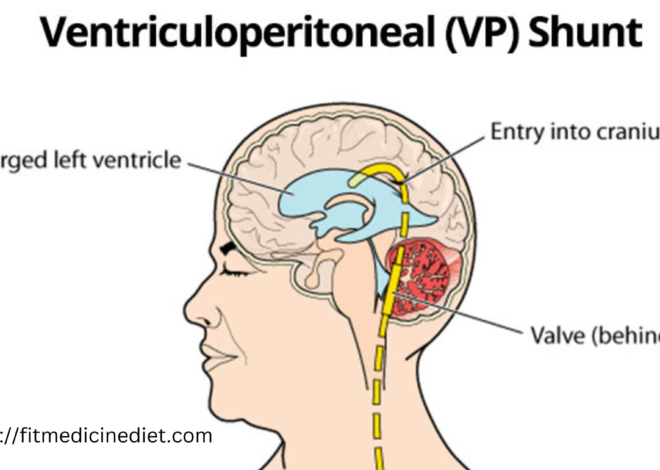
Understanding Head Pains and Nose bleeds best information 2024 : Causes, Treatment, and Prevention
Understanding Head Pains and Nose bleeds: Causes, Treatment, and Prevention
Head pains and nose bleeds are common symptoms that can be alarming when they occur together. While they can be a sign of something as simple as dry air or stress, they may also indicate more serious underlying health conditions. Understanding the causes, recognizing when to seek medical attention, and learning how to prevent these symptoms can help manage them effectively. This article explores the various causes of head pains and nosebleeds, available treatments, and preventive measures.
The Anatomy of Head Pains and Nose bleeds
Head pain, commonly referred to as a headache, is a broad term that encompasses any pain located in the head or upper neck. Headaches can range from mild to severe and can be categorized into primary headaches, which are not caused by another condition (e.g., migraines, tension headaches), and secondary headaches, which are a symptom of another health issue (e.g., sinusitis, hypertension).
Nosebleeds, or epistaxis, occur when the blood vessels in the nose rupture. The nose has a rich supply of blood vessels close to the surface, making it susceptible to bleeding. Nosebleeds can be anterior (originating from the front of the nose) or posterior (originating from the back of the nose). Anterior nosebleeds are more common and less severe, while posterior nosebleeds can be more serious and often require medical attention.
When head pains and nosebleeds occur together, it’s essential to consider potential causes, especially if these symptoms are recurrent or severe.
Common Causes of Head Pains and Nosebleeds
- Environmental Factors
- Dry Air: Dry air, especially in winter or in air-conditioned environments, can dry out the nasal membranes, making them more prone to cracking and bleeding. Dryness can also contribute to headaches, as it may cause dehydration or irritate the sinuses.
- Allergens and Irritants: Exposure to allergens like pollen, dust, or smoke can irritate the nasal passages, leading to nosebleeds and sinus-related headaches. People with allergies may experience congestion and sinus pressure, resulting in head pain.
- Infections
- Sinusitis: Sinus infections cause inflammation and swelling in the sinuses, leading to headaches, facial pain, and sometimes nosebleeds. Sinusitis can be triggered by colds, allergies, or bacterial infections.
- Upper Respiratory Infections: Common colds and flu can cause nasal congestion and irritation, leading to both headaches and nose bleeds. Infections can also increase the likelihood of sinusitis.
- Trauma
- Nasal Trauma: A blow to the face or nose can cause both head pain and nosebleeds. Even minor injuries, such as picking the nose or blowing it too hard, can rupture blood vessels and lead to bleeding.
- Head Injuries: More severe head trauma, such as a concussion, can result in headaches and, in some cases, nosebleeds. These injuries require immediate medical evaluation.
- Hypertension
- High Blood Pressure: Hypertension, or high blood pressure, is a common condition that can lead to headaches. In some cases, severe or uncontrolled hypertension can also cause nosebleeds, although this is less common. Persistent nosebleeds in conjunction with headaches may be a sign of dangerously high blood pressure.
- Medication Side Effects
- Blood Thinners: Medications that thin the blood, such as aspirin or anticoagulants, can increase the risk of nosebleeds. People on these medications may also experience headaches as a side effect.
- Nasal Sprays: Overuse of nasal sprays, particularly those that contain decongestants, can dry out the nasal passages and lead to nosebleeds. These medications can also cause rebound congestion, leading to sinus-related headaches.
- Migraines
- Migraine Headaches: Migraines are a type of primary headache characterized by intense, throbbing pain, often on one side of the head. While nosebleeds are not a common symptom of migraines, the severe pain and pressure during a migraine attack can sometimes trigger a nosebleed, particularly if the nasal membranes are already irritated.
- Stress and Anxiety
- Stress-Induced Headaches: Stress is a significant contributor to tension headaches, which are the most common type of headache. High stress levels can also lead to behaviors like nose-picking or excessive nose-blowing, increasing the risk of nosebleeds.
- Underlying Health Conditions
- Blood Disorders: Conditions that affect blood clotting, such as hemophilia or leukemia, can lead to frequent nosebleeds and headaches. These symptoms may also be a side effect of treatments like chemotherapy.
- Tumors: Though rare, tumors in the nasal passages or brain can cause headaches and nosebleeds. These cases often involve other symptoms, such as vision changes, facial numbness, or unexplained weight loss.
Treatment Options for Head Pains and Nose bleeds
Treating head pains and nosebleeds effectively involves addressing the underlying cause. Here are some treatment options based on the most common causes:
- Home Remedies
- For Dry Air: Use a humidifier to add moisture to the air, especially in dry climates or during winter. Applying a saline nasal spray can also help keep the nasal passages moist.
- For Allergies: Avoid known allergens, use antihistamines, and consider allergy testing and immunotherapy if symptoms are severe. Nasal saline rinses can help clear irritants from the nasal passages.
- For Minor Nosebleeds: Pinch the soft part of your nose and lean forward slightly to avoid swallowing blood. Apply a cold compress to the bridge of your nose to constrict blood vessels. If the bleeding doesn’t stop after 10-15 minutes, seek medical attention.
- For Headaches: Over-the-counter pain relievers like ibuprofen or acetaminophen can help alleviate headache pain. Ensure you stay hydrated and rest in a dark, quiet room if the headache is severe.
- Medical Treatment
- For Infections: Antibiotics may be necessary for bacterial sinusitis. For viral infections, treatment typically focuses on relieving symptoms with decongestants, nasal sprays, and rest.
- For Hypertension: If high blood pressure is causing head pains and nose bleeds, managing it through lifestyle changes, such as diet and exercise, and medications like ACE inhibitors or beta-blockers is crucial.
- For Migraines: Prescription medications, such as triptans, can be effective in treating migraines. Preventive treatments, including lifestyle changes and medications, may also be recommended for chronic migraines.
- For Nosebleeds Caused by Medications: If blood thinners are causing frequent nosebleeds, your doctor may adjust your dosage or explore alternative treatments. Always consult a healthcare provider before making any changes to your medication regimen.
- For Blood Disorders: Treatment for blood disorders varies based on the condition but may include medication, blood transfusions, or other therapies to manage symptoms.
- For Tumors: Treatment options for tumors include surgery, radiation therapy, and chemotherapy, depending on the type and location of the tumor.
When to Seek Medical Attention
While many instances of head pains and nose bleeds can be managed at home, there are situations where medical attention is necessary:
- Frequent or Severe Nosebleeds: If you experience frequent or severe nosebleeds that don’t stop after 20 minutes, seek medical attention. This could be a sign of an underlying health issue.
- Persistent Headaches: Headaches that last for several days, don’t respond to over-the-counter medications, or are accompanied by other symptoms like confusion, fever, or vision changes should be evaluated by a healthcare provider.
- Head Pain and Nose bleeds Following Trauma: If you experience head pain and nose bleeds after a head injury or trauma, seek immediate medical attention to rule out serious conditions like a concussion or skull fracture.
- Unexplained Symptoms: If you have head pains and nose bleeds along with other unexplained symptoms, such as fatigue, weight loss, or frequent bruising, consult a healthcare provider for a thorough evaluation.
Preventive Measures
Preventing head pains and nose bleeds involves managing underlying health conditions, avoiding triggers, and maintaining a healthy lifestyle. Here are some preventive tips:
- Stay Hydrated: Drinking plenty of water helps keep the nasal passages moist and reduces the likelihood of dehydration-related headaches.
- Maintain a Healthy Environment: Use a humidifier in dry environments, avoid smoking, and minimize exposure to allergens and irritants.
- Practice Good Nasal Hygiene: Avoid picking your nose and use gentle techniques when blowing your nose. Apply a thin layer of petroleum jelly inside your nostrils to keep them moist.
- Manage Stress: Engage in stress-reducing activities like yoga, meditation, or regular exercise to prevent tension headaches and stress-related nose bleeds.
- Monitor Blood Pressure: Regularly check your blood pressure, especially if you have a history of hypertension. Follow your healthcare provider’s recommendations for managing your blood pressure.
- Use Medications Responsibly: Follow your doctor’s instructions when using blood thinners or nasal sprays. Avoid overusing nasal decongestants to prevent rebound congestion.
Conclusion
Head pains and nosebleeds can be distressing, especially when they occur together. While they are often caused by minor issues like dry air or stress, they can sometimes indicate more serious health problems. Understanding the potential causes, knowing how to treat these symptoms at home, and recognizing when to seek medical attention can help you manage them


